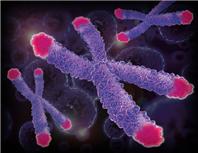Short telomere length is associated with NOTCH1/SF3B1/TP53 aberrations and poor outcome in newly diagnosed chronic lymphocytic leukemia patients according to this Swedish study by Richard Rosenquist and his team...
quote
Most previous studies on telomere length (TL) in chronic lymphocytic leukemia (CLL) are based on referral cohorts including a high proportion of aggressive cases.
Here, the impact of TL was analyzed in a population-based cohort of newly diagnosed CLL (n=265) and in relation to other prognostic markers. Short telomeres were particularly associated with high-risk genetic markers, such as NOTCH1, SF3B1 or TP53 aberrations, and predicted a short time to treatment (TTT) and overall survival (OS) (both P<0.0001). TL was an independent prognostic factor and subdivided patients with otherwise good-prognostic features (e.g. mutated IGHV genes, favorable cytogenetics) into subgroups with different outcome. Furthermore, in follow-up samples (n=119) taken 5-8 years after diagnosis, TL correlated well with TL at diagnosis and remained unaffected by treatment.
Altogether, these novel data indicate that short TL already at diagnosis is associated with poor outcome in CLL and that TL can be measured at later stages of the disease.
end quote
Abstract...
onlinelibrary.wiley.com/doi...
Telomeres
